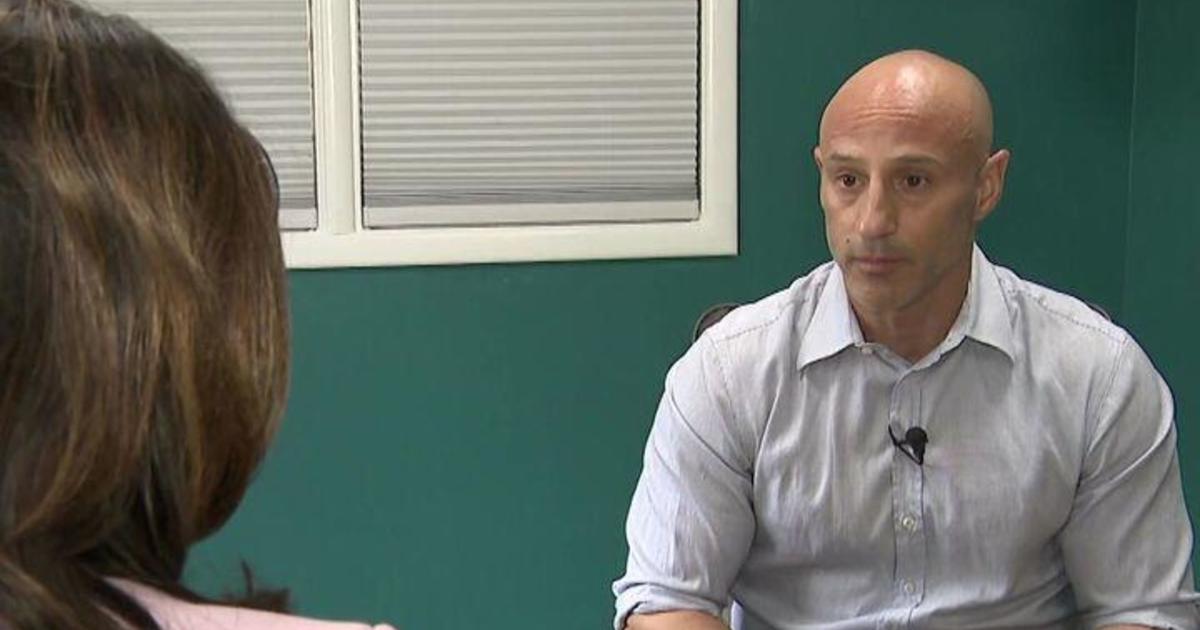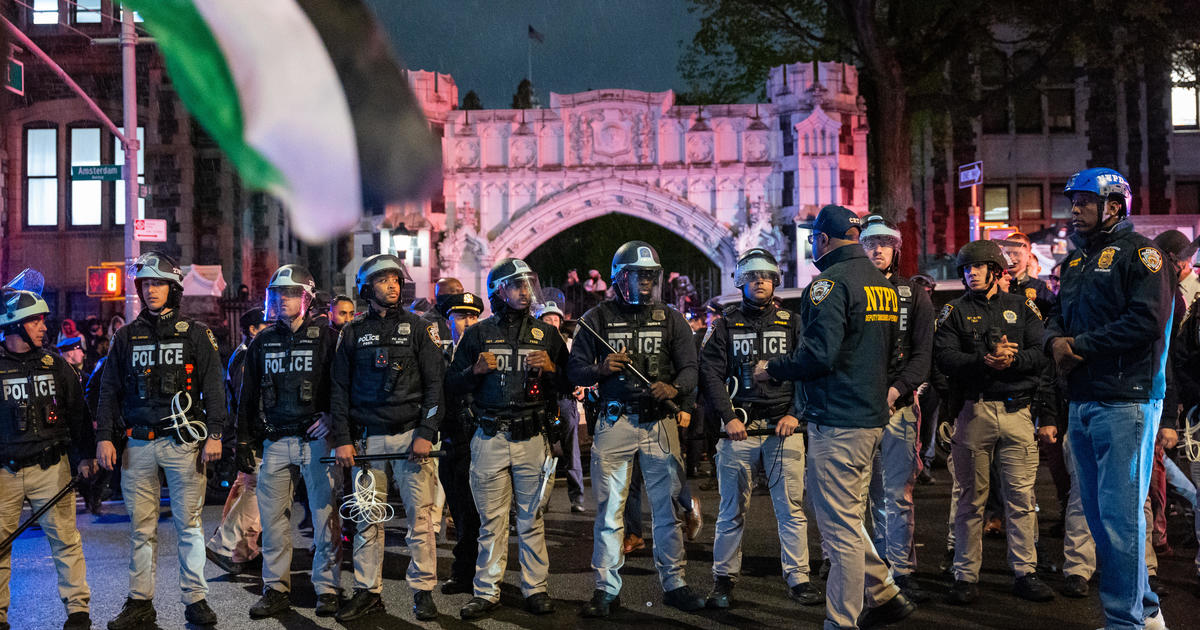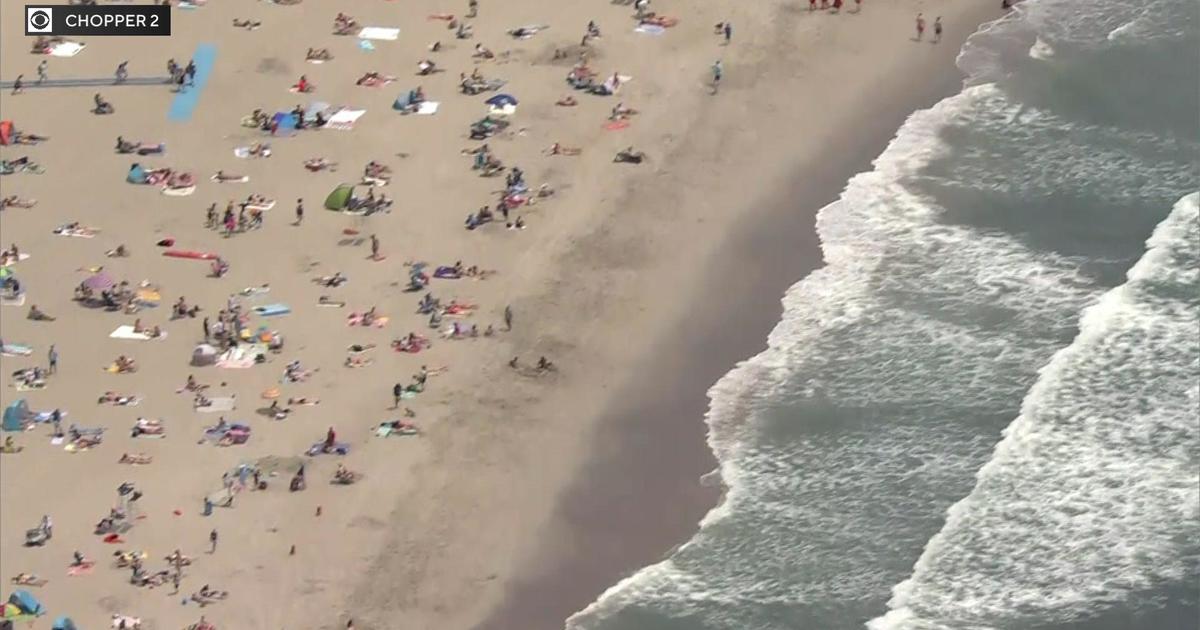Surviving Landfall: CBS2's Lou Young Remembers Hurricane Jeanne
Preparing for the amazing arrival of a hurricane in New York City I thought it would be a good time to share my surprise and horror at the experience of living through a direct landfall of a Category 2 hurricane just a few years ago. Like Irene, Hurricane Jeanne fell onto a landscape already saturated from previous heavy rain. We were not expecting to fight for our lives. If it had been a bit stronger it would've killed us. - Lou Young
More: Track Irene's Path | Hurricane Resources | Evac Zone Finder | Severe Weather Guide
It was luck. Pure luck put us in the path of a major storm on the weekend of September 24, 2004. The same luck allowed us to survive to tell the tale.
Hurricane Jeanne descended on the east coast of Florida just after nightfall as we waited at a small hotel on the bay across from Hutchinson Island off US 1. The hotel was a boxy two-story building facing the highway with a pool directly behind it. The live crews and CBS satellite truck we were using parked close to the water behind a squat motel-like structure that faced out across the bay toward the approaching storm. Some of the CBS people took rooms near the equipment, but most of us booked accommodations in the main building about 200 yards from the water's edge. They chose the spot because they'd been through the area only three weeks before, when Hurricane Francis rolled through. The idea was to get close to landfall without becoming a casualty of the storm. It seemed unlikely that two back-to-back hurricanes would take the same path ashore so the hotel near Sebastian seemed like a safe bet. Hurricanes, though, can do unlikely things.
My cameraman was a high-spirited ex-Marine out of Tampa named Phil Willette. We only worked that once together and the experience only deepened my respect and affection for the Marine Corps. He was a good person to share this foxhole with.
Phil shot plenty of whipping waves, arching power lines, and bending trees in the hour before sunset, but that was when the winds were merely approaching tropical storm strength. As we fed the material to New York the first of the hurricane force gusts rattled the camera bayside motel strip and began to rock the satellite truck even though it was tucked up against the building on the leeward side sheltered from the worst of the wind. We barely got the story fed in before the truck operator shut everything down and folded the rig's big dish to keep it from being damaged. The video that aired back in the city that night had visible interference and break-up because of the conditions. What we were experiencing while you watched that tape, though, was much, much worse.
Photos: Worst Hurricanes, 2000-2011 | Hurricane Irene Pictures
Walking back to the main building tasting salt water in the wet wind we had no way of knowing what a long night we were in for. Hurricane Jeanne was making it's landfall only 2 miles or so from where Francis had roared ashore. 115 mph hour winds were about to rip into a landscape already ravaged by one hurricane. All that stacked debris was about to become airborne again.
The curious thing about covering hurricanes is that you can't see the worst of it when it's actually happening. The noise is deafening, the steady howl and roar is so pervasive you can still "hear" it for days after the storm. The wind presses until something gives way with a crash, or perhaps it carries a piece of lumber of a broken tree limp miles through the air to meet your window or your head if you're in the open. Glass breaks, timbers tear, walls groan. You gasp, flinch, and fight the urge to curl up into a ball.
At the hotel the wind rattled windows and made the walls shutter. People left their rooms and gathered in the dining room off the lobby watching the weather satellite images of the storm on TV until the power quit. Part of the stainless steel awning peeled off just about the time the lights flickered and went out. We sat for a while in the light of portable lanterns and decided we'd better get back to the camera position before it got too rough to move. It was, after all, our job to cover this thing. It wasn't safe anywhere so we might as well work.
We parked Phil's personal truck in the safest placed we could find up against the building and took the big car I'd rented out into the parking lot for the longest 200 yard drive of my life. I took the wheel as Phil shot out the passenger window keeping the lens pointed away from the horizontal rain. The headlights seemed to be illuminating a waterfall ahead, but the reflected light allowed Phil to shoot the property's picket fence peeling away piece by piece. Then, a pelican flopped into view, waterlogged and exhausted and was whisked away a moment later when it raised it's head too high, the wind catching it's long beak and pulling it up and out of sight. Panning back down to the pavement we saw the water was several inches deep and catfish from the bay were swimming toward the highway, away from the storm. We drove slowly as the wind pushed at the car—first resisting our advance as we drove toward the camera position, then trying to force us sideways into a water-filled ditch when we turned to enter the narrow parking lot facing the bayside rooms. Up against the big satellite truck, in the lee of the cinder block building we were able to get out.
Power poles began to crack and fall, and the sky was lit by flashes of man-made lightning as electric transformers arced then died. We could see sections of the town go dark then light up again as electricity found it's way around each downed line. Finally there was a big flash and it all went black. The streetlights, the houses down the block, the hotel 200 yards away; everything was suddenly invisible behind a vast curtain of wind and rain. We were in a small circle of light from the satellite truck's generator illuminating long white streams of water snaking overhead and from around either side of the building. The folks from CBS, and from our sister station in Miami came out of their rooms onto the second floor balcony facing away from the storm. There was a case of beer, but it did nothing to numb to the adrenaline-fueled fear. Phil and I looked at each other and wondered aloud if we'd made a serious mistake by leaving the big building. We took shots of the aluminum siding flying off into the darkness, then the rain gutters, then the insulation from the ceiling exposed by the now, missing roof tiles. The building was coming apart around us. Water was rising on either side, the bay now only a few feet from the car.
Palm fronds and tree branches from Hutchinson Island began to hit the roof of the building, and ricochet off into the darkness. We waited for the eye to pass over so we could safely drive back to the big building but without power couldn't see the evolving satellite track that told us the eye was never coming. We were stuck in the eye WALL for more than 90 minutes as the storm pivoted slightly. The wind didn't slack, but began to shift to expose our position. We had to leave and would have to run through the worst of it as pieces of wood and aluminum siding from the houses on the barrier island came cartwheeling through the parking lot. The STOP sign just a few feet away was vibrating so quickly it looked as if it would sever a limb if you got too close.
We got back in the car left the safety of our shelter and moved out into the maelstrom. I've seldom been that frightened. Something hit my door as we made the left guessing at the boundaries of the road, praying to avoid the ditches that were now invisible holes in a shimmering wind-whipped lake. When I turned to head toward the big building the car began to accelerate wildly. The wind now at our back, I took my foot off the accelerator and stood with both feet on the brake. The car wanted to fly forward! Large objects were hitting the trunk and rear window. Phil was peering out the side window trying to spot a path to steer to safety. We pulled around the front of the building and managed to park next to a large trailer holding a motorboat. Phil got out and sprinted to the hotel lobby like the Marine he is seeking cover from enemy fire. I'm no Marine, though. I couldn't move.
A large piece of corrugated metal fell on the boat next to me and whipped away onto the highway. I imagined what it would've done to me had I been outside the car. It suddenly seemed plausible to finish the night right where I was and wait the storm out. Shattering glass a few spaces away changed my mind.
A 2 by 4 had pierced the rear window of someone's car nearby. That could be me at any moment. Then there was a knock at the window. "Are you coming?" Phil screamed over the wind. He'd come back for me. I found my courage and we sprinted to the lobby vaulting over a hedge where two fellow guests were manning a taped-up sliding glass door.
The wind faded a little. I took a drink from someone's flask and crawled up to my dark room listening to the window vibrate and the debris crash against the roof. I drifted off in uneasy dreams and someone missed the noise when the back of the building cracked open and half the roof peeled away.
Bleary-eyed in the grey dawn I managed to get a cell phone to work and called in a report. The news director said it was unusually good because of an edge in my voice she hadn't heard before. We worked the aftermath in the landfall zone for two days, sleeping in the damaged hotel because there was no way to leave.
Jeanne was "only" a category 3. If you are asked to evacuate as a hurricane approaches take my advice: Do it.
A native New Yorker, Lou Young joined CBS 2 in June 1994. He has served as a broadcast journalist in the New York market since 1981.



